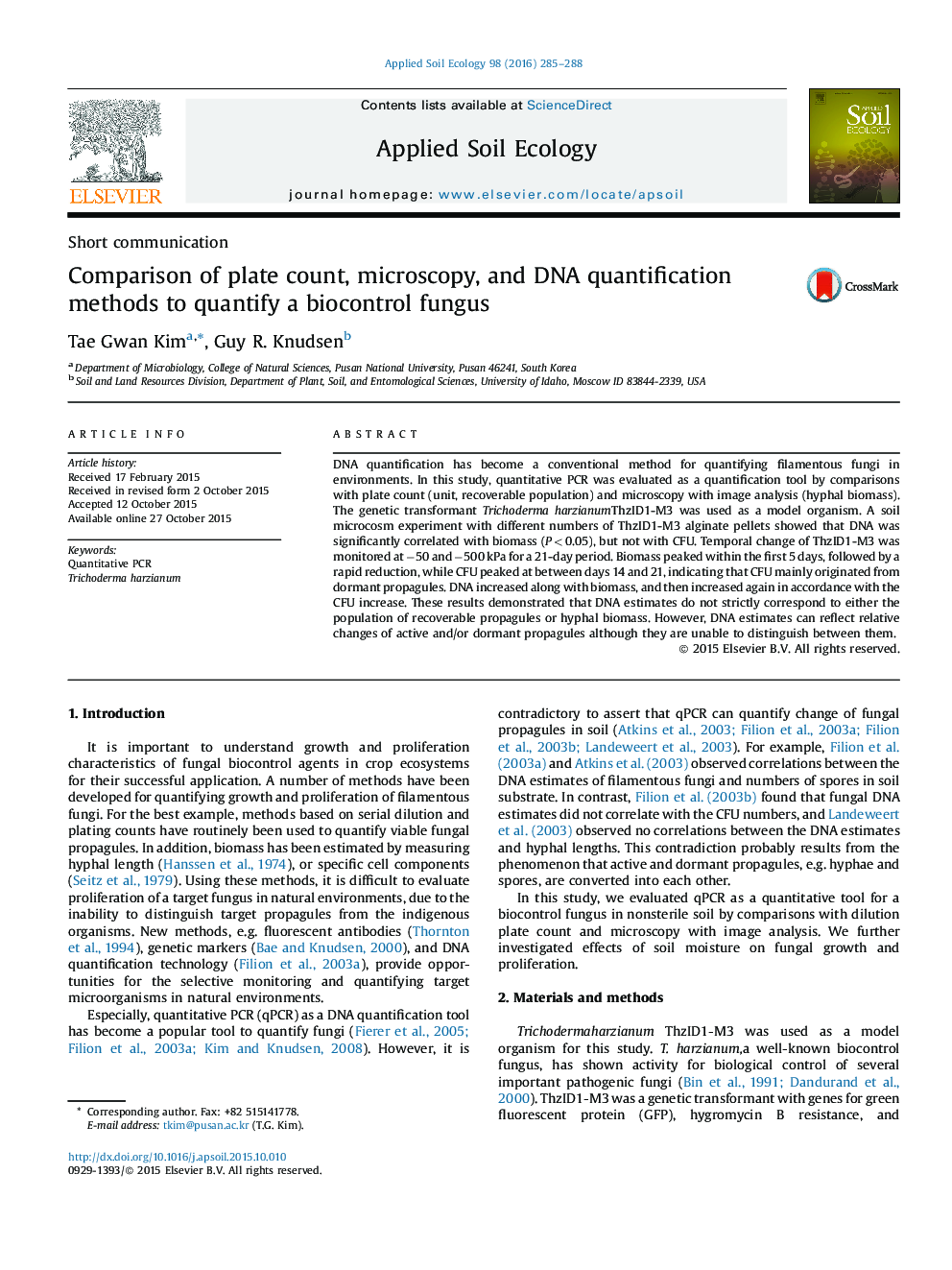| کد مقاله | کد نشریه | سال انتشار | مقاله انگلیسی | نسخه تمام متن |
|---|---|---|---|---|
| 4381882 | 1617785 | 2016 | 4 صفحه PDF | دانلود رایگان |
• Quantitative PCR (qPCR) was evaluated as a quantification tool for a biocontrol fungus.
• DNA estimates did not always correspond to either recoverable population or hyphal biomass.
• However, DNA estimates increased as either recoverable population or biomass increased.
• qPCR can reflect relative changes of active and inactive fungal propagules.
DNA quantification has become a conventional method for quantifying filamentous fungi in environments. In this study, quantitative PCR was evaluated as a quantification tool by comparisons with plate count (unit, recoverable population) and microscopy with image analysis (hyphal biomass). The genetic transformant Trichoderma harzianumThzID1-M3 was used as a model organism. A soil microcosm experiment with different numbers of ThzID1-M3 alginate pellets showed that DNA was significantly correlated with biomass (P < 0.05), but not with CFU. Temporal change of ThzID1-M3 was monitored at −50 and −500 kPa for a 21-day period. Biomass peaked within the first 5 days, followed by a rapid reduction, while CFU peaked at between days 14 and 21, indicating that CFU mainly originated from dormant propagules. DNA increased along with biomass, and then increased again in accordance with the CFU increase. These results demonstrated that DNA estimates do not strictly correspond to either the population of recoverable propagules or hyphal biomass. However, DNA estimates can reflect relative changes of active and/or dormant propagules although they are unable to distinguish between them.
Journal: Applied Soil Ecology - Volume 98, February 2016, Pages 285–288
